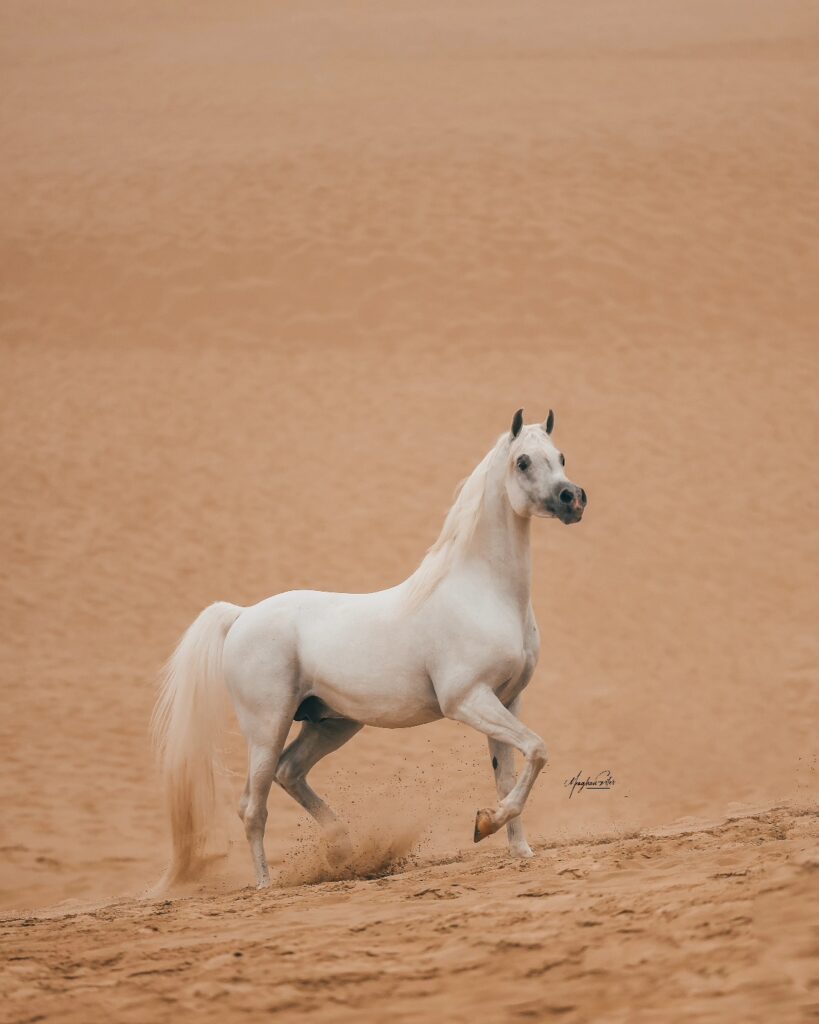
The History and Origins of the Arabian Horse: A Legacy of Elegance
The Arabian horse, with its graceful silhouette, refined features, and undeniable presence, is one of the most celebrated and ancient horse breeds in the world. Revered for its beauty, stamina, and intelligence, the Arabian horse carries a storied past that intertwines with human history, shaping its legacy as a symbol of elegance and endurance.
Ancient Beginnings
The origins of the Arabian horse trace back over 4,500 years, making it one of the oldest known horse breeds. Native to the Arabian Peninsula, this breed was shaped by the harsh desert environment. Early Bedouin tribes played a pivotal role in its development, selectively breeding horses that could survive extreme heat, scarce water, and long journeys.
Arabian horses became essential to the Bedouin way of life. They were not only prized for their utility in war and travel but were also deeply embedded in Bedouin culture. These horses often lived closely with their owners, even sharing tents, fostering a unique bond between human and horse. This intimate relationship further contributed to the Arabian’s gentle temperament and loyalty.
The Arabian Horse in Warfare
The Arabian’s speed, endurance, and agility made it a formidable weapon in battle. Known for their courage and ability to traverse vast distances without tiring, Arabian horses became the mounts of choice for warriors across the Middle East. Their influence extended far beyond the Arabian Peninsula as they were introduced to new territories through conquests and trade.
Notably, the Arabian horse’s genetic influence can be seen in many modern horse breeds, such as the Thoroughbred, Andalusian, and American Quarter Horse. The Arabian’s qualities of stamina, speed, and elegance have made it a foundational breed in the equestrian world.
Symbol of Nobility and Elegance
Throughout history, the Arabian horse has been associated with royalty, nobility, and prestige. Renowned historical figures, including Genghis Khan, Alexander the Great, and Napoleon Bonaparte, recognized the Arabian’s unparalleled qualities and favored them as mounts.
In addition to its physical attributes, the Arabian horse’s striking appearance contributed to its legendary status. With its arched neck, finely chiseled head, large expressive eyes, and high tail carriage, the Arabian exudes elegance and beauty that is often depicted in art and literature throughout history.
The Arabian Horse Around the World
The Arabian horse’s influence spread far beyond the Middle East due to trade and cultural exchange. During the Islamic conquests, Arabian horses were introduced to Europe, where they became highly sought after. By the 16th and 17th centuries, Arabian horses had become integral to royal stables across Europe.
In the Americas, the breed’s introduction came later but had a significant impact. Arabian horses were used to improve the stamina and quality of other breeds, leaving a lasting legacy in disciplines such as endurance riding and competitive equestrian sports.
Modern-Day Arabian Horses
Today, the Arabian horse continues to captivate enthusiasts worldwide. Its versatility allows it to excel in various disciplines, including dressage, show jumping, and endurance riding. Beyond performance, Arabians are cherished for their companionship and unique connection with humans.
Organizations and breeders worldwide work tirelessly to preserve the purity of the Arabian bloodline, ensuring that its legacy of elegance and endurance remains intact. Prominent events and shows celebrate the breed’s history and beauty, showcasing its timeless appeal.
A Legacy Worth Preserving
The Arabian horse is more than just a breed; it is a living piece of history and a testament to the enduring relationship between humans and horses. Its legacy, rooted in the deserts of the Arabian Peninsula, continues to inspire admiration and reverence across cultures and generations. Whether gracing the pages of ancient manuscripts or competing on modern-day stages, the Arabian horse remains an icon of elegance, strength, and enduring beauty.

